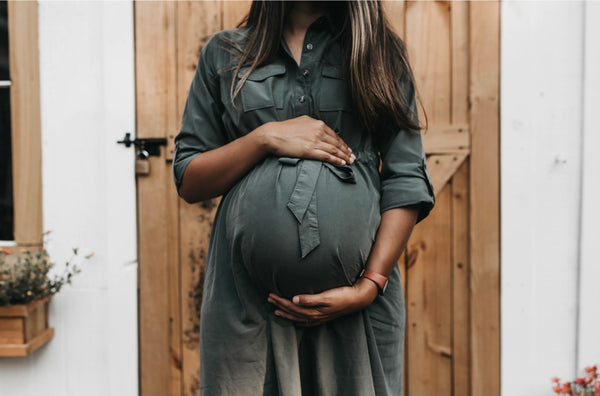
Pregnancy Pains
At least half of all pregnant women will experience back pain during their pregnancy. For many of these women, the pain is severe enough to disrupt their activities of daily living. It is important to understand that pregnancy related back pain is often multi-factorial and is rarely attributed to a single cause. Factors such as weight gain, hormonal changes and stretching abdominal muscles are common contributors.
The average healthy weight gain during pregnancy is approximately 30 pounds. This additional weight, mostly in the abdominal region, places increased stress on the joints of the back, hips, knees and feet. As baby grows, Mom’s abdominal muscles become stretched and, in some cases, can separate, a condition known as diastasis recti. This stretching and/orseparation means mom has decreased abdominal muscle strength. Abdominal weakness places greater demand on the muscles of the low back as they work to compensate. Increased pressure and demand on the structures of the low back can cause pain. In the third trimester, the level of a hormone called “relaxin” increases substantially. Relaxin helps the ligaments of the pelvis loosen to accommodate the growing baby and enlarging uterus. The increased joint laxity will cause the muscles of the back and pelvis to work overtime to keep Momupright and balanced.
The good news is that there are easy ways to help minimize the risk of back pain. The following are evidence-based suggestions for preventing and managing pregnancy related pain;
The 2019 Canadian guideline for physical activity throughout pregnancy (https://csepguidelines.ca/wp-content/uploads/2018/10/4208_CSEP_Pregnancy_Guidelines_En_P2A.pdf ) suggests:
All women without contraindication should be physically active throughout pregnancy.
Pregnant women should accumulate at least 150 minutes of moderate-intensity physical activity each week to achieve clinically meaningful reductions in pregnancy complications. Physical activity should be accumulated over a minimum of 3 days per week; however, being active every day is encouraged. Pregnant women should incorporate a variety of aerobic exercise and resistance training activities to achieve greater benefits. Adding yoga and/or gentle stretching may also be beneficial. Pregnant women who experience light-headedness, nausea or feel unwell when they exercise flat on their back should modify their exercise position to avoid the supine position.
Although pain is likely to occur during pregnancy, it does not mean Mom’s have to suffer. Numerous studies show manual therapy during pregnancy can alleviate back pain by decreasing pressure on the joints, muscles and nerves. Those who receivemanual therapy can expect less pain during pregnancy and labour. Chiropractors, massage therapists and physiotherapists can provide safe, effective, conservative care to relieve painful symptoms during pregnancy and in the post-partum period.
Dr. Kara Laverdure BHSc., D.C
